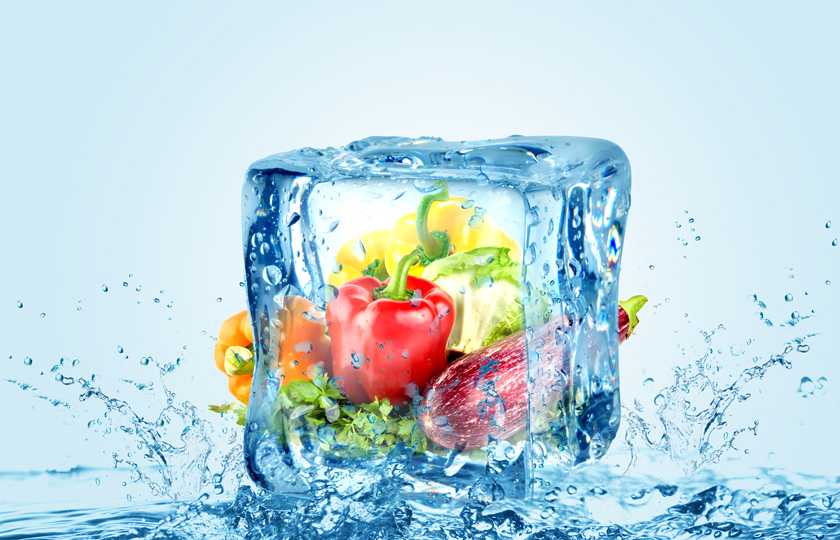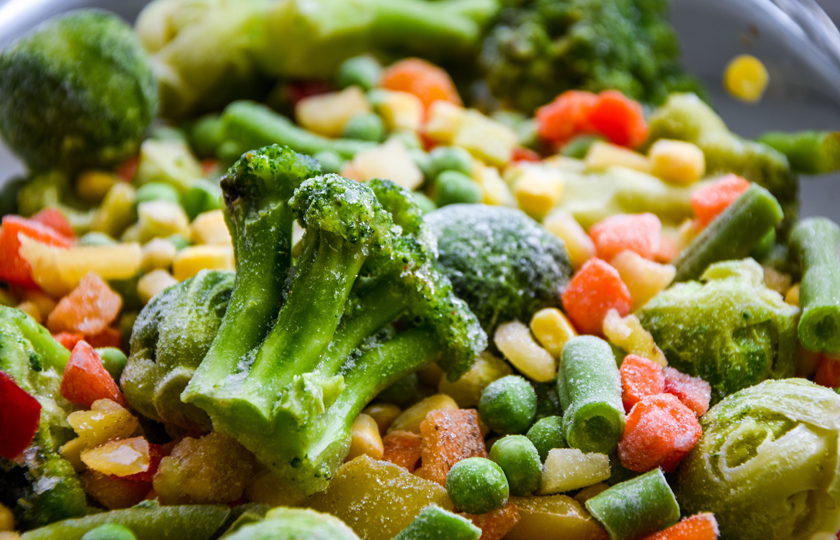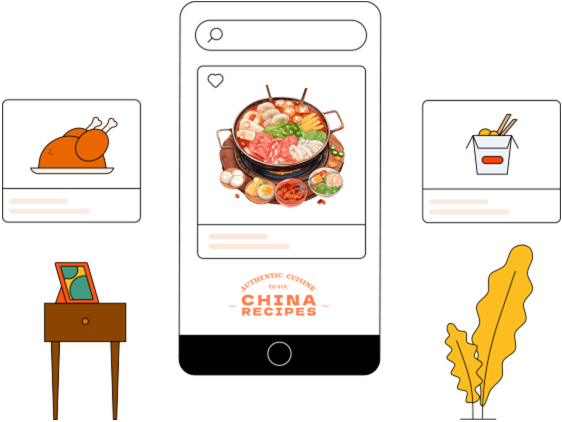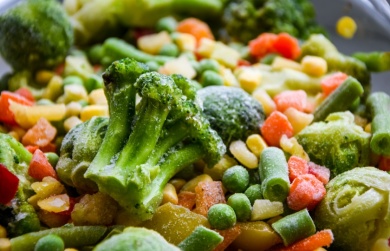Can You Freeze Vegetables Without Blanching?Read This Before You Try!

Are you like me, with your fridge constantly stocked full of various vegetables? Sometimes when you're busy, you simply don't have time to process each vegetable one by one, and you just want to throw them all directly into the freezer. It's convenient and doesn't waste any! But here comes the problem - do you have to blanch vegetables before freezing them? Can you freeze them directly without blanching?
Can you freeze vegetables without blanching?
Let's get to the point first: Yes, but not all vegetables are suitable!
What we usually call "blanching" is actually to lock in the color, texture, and nutrients of vegetables. It can also kill enzymes and prevent spoilage. If you don't blanch before freezing, some vegetables may become soft and dull in color, and they'll taste "wilted".
But don't worry too much! Some vegetables are naturally suitable for freezing directly, and they can still maintain a good state without blanching. The key is to know which ones you can "take shortcuts" with and which ones you can't.
Just remember simply: It's not recommended to freeze leafy vegetables directly. Root vegetables and flavoring vegetables can be tried to some extent.
What vegetables can you freeze raw?
I have personally tested that the following vegetables can be cut and frozen directly, which is extremely convenient:
Onions, garlic, and ginger: Chop them up and put them in bags for easy use.
Bell peppers and chili peppers: Cut them into strips or cubes and freeze. It's convenient for cooking and stir-frying.
Corn kernels and green peas: They are already processed when you buy them, so you can freeze them directly.
Coriander, scallions, and celery: Wash, dry, chop, and freeze. They're perfect for seasoning.
Onions and carrots: Slicing or shredding them and then freezing is okay.
These kinds of vegetables don't have an especially high water content, and their structure is relatively rigid. After freezing and thawing, they won't become too soft and limp. They're suitable for direct stir-frying, boiling, and stewing, which is convenient and hassle-free.
Small reminder: Although you can freeze them raw, make sure to dry them thoroughly before processing to avoid clumping due to ice formation, which could affect their use.
How to freeze vegetables
Actually, the steps are super simple. This is how I do it myself:
Wash thoroughly → Drain completely (this is crucial!)
Cut them into the right size. Just cut them according to your usual cooking habits.
Put them into sealed bags or storage boxes.
Stick a label with the name and date. Otherwise, you'll definitely forget what it is in a few months...
Here's a little trick: If you want them not to stick together after freezing, you can first "freeze them flat and separately". After they're frozen hard, put them in bags, and they won't clump easily, making it super easy to take out!

How long can you freeze vegetables?
Based on my personal experience and reference materials, the general freezing times are as follows:
Vegetables that haven't been blanched: It's best to eat them within 3 - 4 months.
Vegetables that have been blanched: They can be stored for up to 8 - 12 months.
Although the fridge is like a "time pausing device", the longer they're frozen, the more the taste and nutrients will gradually decline. So I recommend: Regularly clean the fridge and stock vegetables reasonably. This is the safest way.
Methods and time for blanching vegetables
Although the blanching step is troublesome, it's really to preserve the quality, color, and taste!
Basic steps for blanching:
Bring water to a boil and add a little salt (it helps lock in the color).
Put the cut vegetables into the boiling water and blanch for 30 seconds to 2 minutes (depending on the thickness of the vegetables).
Take them out and immediately put them into ice water to cool.
Drain the water and then freeze.
Reference for blanching time:
Broccoli, string beans: 90 seconds
Carrot slices: 1 - 2 minutes
Spinach, bok choy: 30 seconds
Will the taste and nutrients of frozen vegetables change?
To be honest, there will be a slight change, but it's not serious.
Taste: Freezing will rupture the cell walls of vegetables, causing them to become a bit limp after thawing. They're not suitable for making cold salads or raw dishes. However, if used for stir-frying, making soups, or stewing, the taste difference is not significant.
Nutrients: Water-soluble nutrients such as vitamin C will be slightly lost, but overall, the retention is okay, much better than letting the vegetables spoil in the fridge!
How to use frozen vegetables? Do they need to be thawed?
In most cases, I don't thaw them and just put them directly into the pot!
For stir-frying, making soup, or oven cooking, you can just take out the frozen vegetables directly without thawing and heat them in the pot.
For example, you can directly add frozen peas and carrot cubes to fried rice. The taste and texture are quite good. It saves time and is convenient.
The same goes for making soup. When the soup is boiling, add the frozen vegetables directly and cook for a few minutes.
However, there are some exceptions. When making dumpling fillings or spring roll fillings, it's best to let the frozen vegetables thaw naturally in the refrigerator's crisper for a few hours in advance. After thawing, gently squeeze out the excess water by hand so that the filling won't be too wet.
Finally, a reminder: Don't thaw and refreeze frozen vegetables repeatedly. Bacteria are likely to multiply that way. It will make you feel uncomfortable after eating and also affect the taste.
Methods of preserving vegetables
If you want to keep vegetables fresh and delicious, you must know these preservation tips!
Leafy vegetables (spinach, lettuce)
Wash and shake off the water, wrap them well with kitchen paper, and refrigerate them in a breathable bag. They can last for 3 - 5 days. If you want to store them for a longer time, blanch them first. Immediately after blanching, immerse them in cold water and then refrigerate.
Cauliflower-like vegetables (broccoli, cauliflower)
For short-term storage, you can directly break them into small florets and put them in a fresh-keeping box and refrigerate.
For frozen storage, after blanching, spread them evenly on a tray and pre-freeze for an hour, then put them in bags and vacuum-freeze.
Root vegetables (carrots, potatoes)
Blanch and freeze carrots; it is recommended to steam potatoes first or make them into mashed potatoes before freezing.
Aromatic vegetables (onions, garlic, ginger)
Chop them up and freeze them in a sealed box. It's extremely convenient for cooking.























